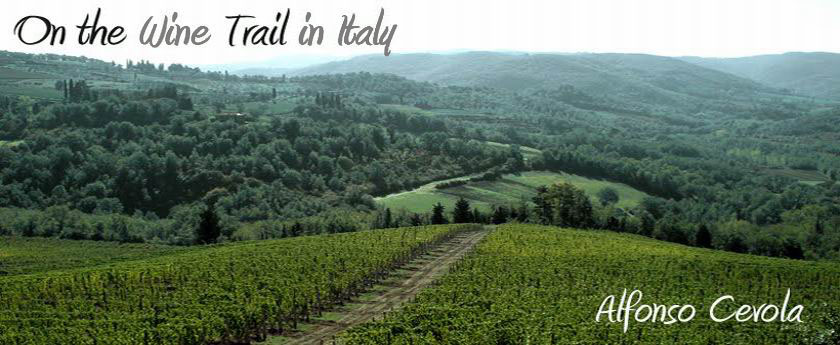Last week I traveled across Texas to hold seminars for the trade on Chianti. It seems simple at first. One of the most popular wines to flow from Italy to America for many generations. Way ahead of other places in the market grip they hold. Wines that are fundamentally simple and full of pleasure. And wines that dovetail without glue or nails with the staples of popular American food: burgers, steaks, pizza, spaghetti and meatballs.
Maybe I am looking too deeply. I really am not sure. I know I have pulled out the magnifying glass these past few years and have been giving the area a good look. I easily understand the hierarchy in other places previously mentioned, but Chianti, I could not tell you without a shred of doubt who is on top.
Yes, there are estates that are classic and worthy of being in the top spots. There's probably a list somewhere you can find that lays out the hierarchy.
What conspires to obfuscate my understanding are the different layers. The difference between Chianti and Chianti Classico. The difference between Chianti Superiore and Chianti Riserva. The difference between Rufina and Montespertoli. The difference between Gaiole and Radda. The difference between Chianti Classico Riserva and Chianti Classico Gran Selezione. So you see where I am going with this? I’m paying attention and I am perplexed. Imagine the folks whom I was standing in front of and trying to explain it all in 90 minutes?
I know the Chianti Consorzio and the Chianti Classico Consorzio have their people running around the world trying to explain their missions. I have sat in some of those seminars. I’m still searching for a way to explain it to the folks we really need to reach: the wine drinking public.
With all the layers and classifications, I’ve simplified it for my purposes. This is really so I can maintain my sanity, more than anything. In no way does it represent the solution to my quandary. But it does allow me to move on.
Chianti - The basic wine. Whether it is in a fiasco (straw covered) bottle or a regular (Bordeaux shape) bottle, this wine is fine for everyday pleasure. Nothing too special, the wine shouldn’t be stored in a cellar. It is a wine that should be drunk up.
Chianti Superiore - This category ultimately confuses me. I have spent several years trying to explain it. I’m done explaining. Either make the wine a Chianti, a Riserva or a Rosso. Give us some peace.
Chianti Riserva - While there seem to be some good values here, what I have found is that a segment of restaurateurs see an opportunity to sell their unwitting clients a wine that they represent for more than it really is. It isn’t a Chianti Classico Riserva; although on many lists a Chianti Riserva will sell for as much as their Classico Riserva counterpart. I think it allows for bad behavior and confuses the public. And those Classico Riservas that are really deserving of the name are lumped into an “also ran” category where they are deemed too expensive.
The other Chianti’s - The 7 sub zones. I’m a fan of some of these from Rufina, Montespertoli, Montalbano, etc. But they have an uphill battle. They have to compare themselves to Chianti Classico or they must distance themselves from the bottom rung industrial Chianti wines that flood the world. They are neither. But who really knows what they are? They live in the middle, a nether world, whereby they always have to tell their story, over and over again.
Chianti Classico - Now the Chianti Classico Consorzio want us to call it Chianti Classico Annata. Well, that ain’t gonna happen in America, folks. One more foreign word? Nope, not here. Not now.
Chianti Classico Riserva - Here is one bright spot that needs polishing. The wines are all over the map. Some use small oak, some don’t. Some use Sangiovese 100%. Some blend Cabernet and Merlot. Some are delicate, some are linebackers. Some are $20 and some are $50. What the hell? Someone, please explain it to me so I can relay the information to all the folks who ask me every day.
Chianti Classico Gran Selezione - Really? Isn’t this exactly the reason folks like Piero Antinori and Sergio Manetti decided to get out of the Chianti-calling business? Here’s how one sommelier put it to me this week during a Q&A session. “So winery X decides the wine they would normally make as a Riserva they will now make as a Gran Selezione and charge $10 or $20 more?” Exactly.
What I’d like to see is coming. Masnaghetti is doing the maps. So far he has done Gaiole in Chianti, Panzano and Radda in Chianti. And while this won’t offer me a hierarchy of quality, it will give the map lover in me a chance to look at things differently. I know there are folks who do know the difference between Castelnuovo Berardenga and Greve. What I am looking for is a way to explain this to the many groups I address during the year. I want to help de-mystify it. And I'm not alone.
Is that asking too much?
Further exploration:
Chianti: The Land, the People and the Wine - By Raymond Flower (now available as an E-book)
Consorzio Vino Chianti
Consorzio Vino Chianti Classico
Chianti: Still Tuscany's Flagship Wine? by Ed McCarthy
The “Concept of Chianti” at a Seminar and Tasting by Charles Scicolone
A Modest Proposal for Chianti Classico by Tom Maresca
Chianti Classico - Restoring Some Luster by Tom Hyland
Chianti Classicos with an Identity Crisis by Eric Asimov
Report from ‘Chianti Classico Collection 2013’, Florence: ‘Gran Selezione’ or ‘Gran Casino’? by David Berry Green
wine blog + Italian wine blog + Italy W








